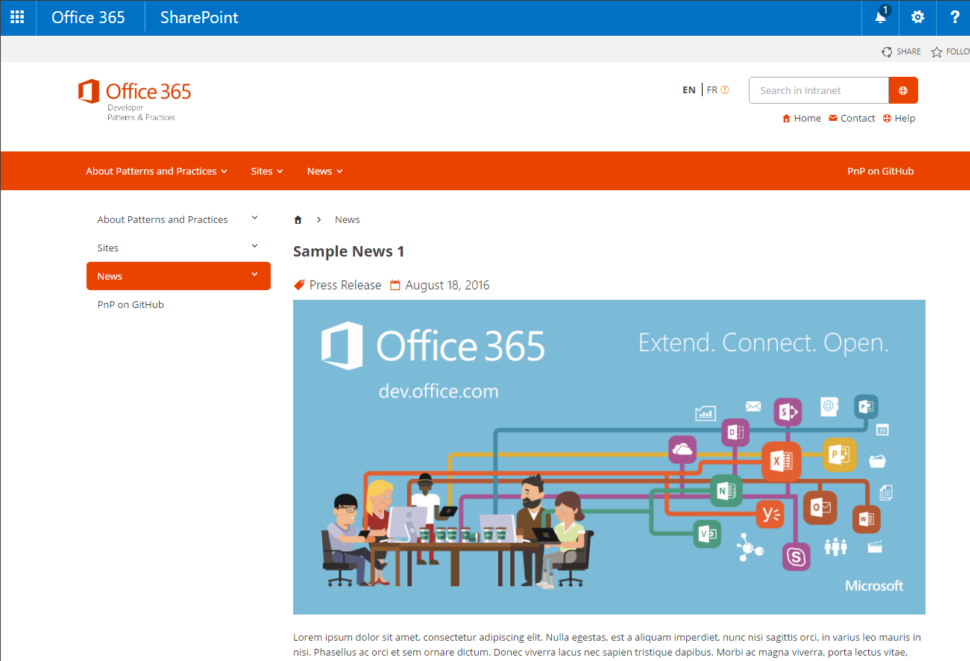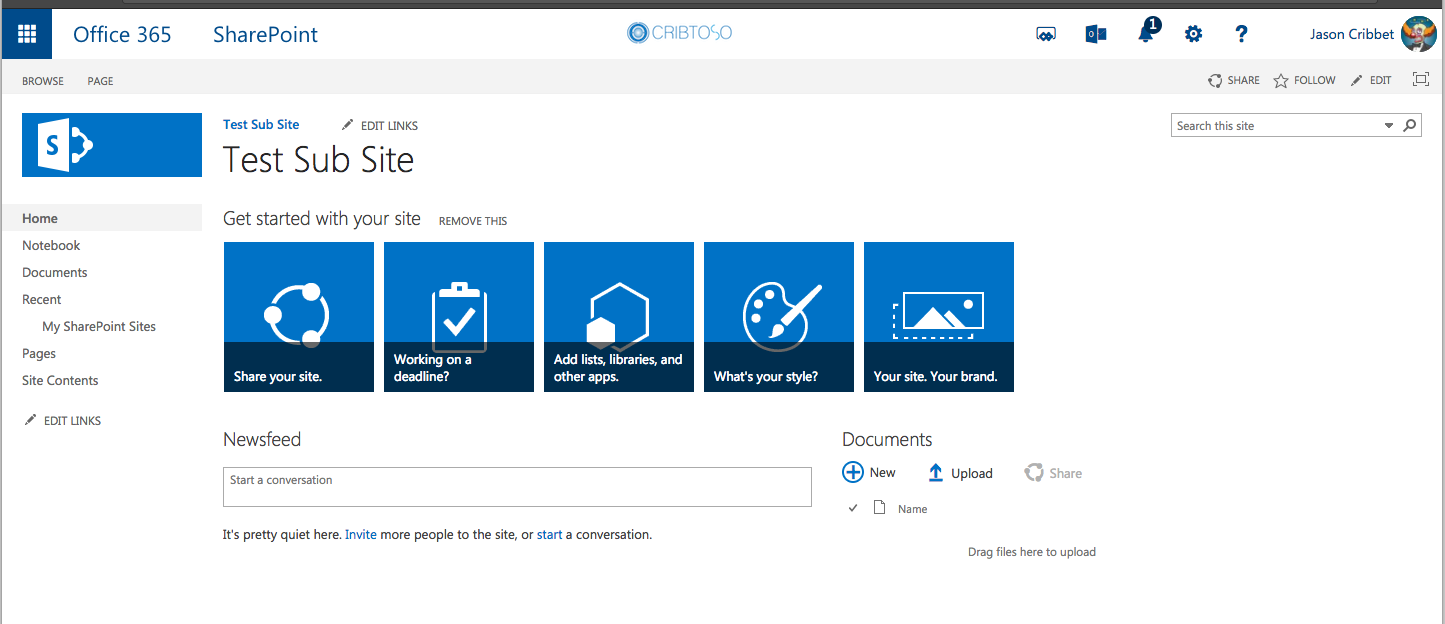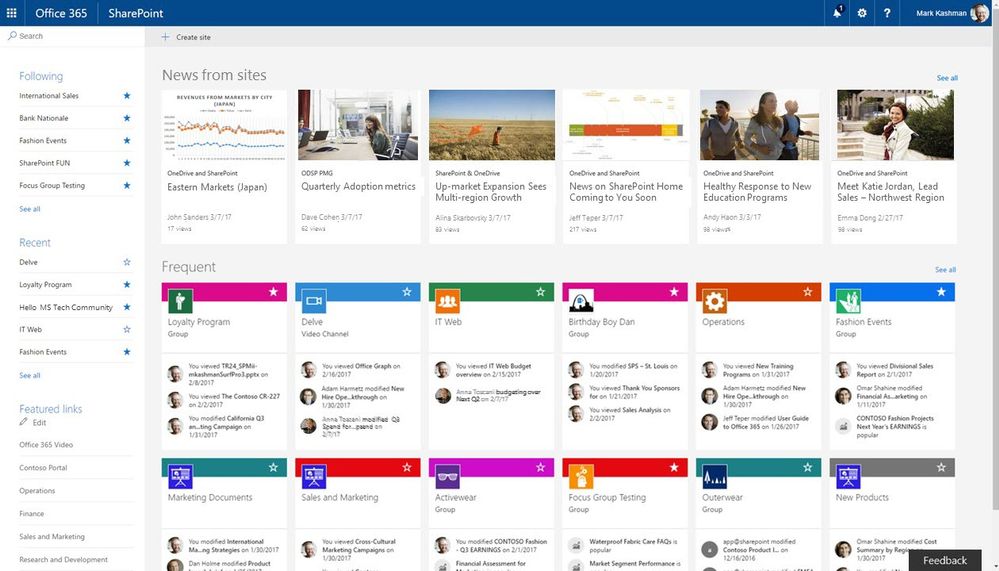Tiers of Joy
How you plan the information architecture of your SharePoint environment is an important decision. You must put some time in to really understand your content and make sure that the structure of your content is going to both, satisfy the current needs of your users and properly plan for the future of your environment. I’ve seen in many environments, because they didn’t have a proper plan, they have turned into the equivalent of a data hoarders dream. Content here, content there, content everywhere with no formal structure. Users end up lost, confused, and don’t come back.

Your goal for organizing your environment is to enable your users to Discover, Recover, and Follow Up with their content. Doing so will enhance your user’s experience with your environment and promote user adoption across the board. Fortunately, Office 365 and SharePoint Online have brought better tools to the table to combat this overrun of content but it’s not fool proof. You will still be required to have a good understanding of your content to know where it’s going.
How can you get a handle of your content?
Lets take a step back from your specific content and get a good understanding of what we mean when we talk ‘content’. Typically, you think of content as the information that your organization either creates or acquires. Things like documents, web pages, dashboards, etc. These are the traditional content elements that you would expect in any modern content management system.
Office 365 adds more to your environment than your traditional CMS. With Office 365 and SharePoint Online, your content now includes additional data that’s a result of the advanced curation and surfacing of information derived ‘about’ your data. Pages like Delve or the SharePoint Home Page are amazing at this and bring a whole different level of structure to your content. One that needs to be properly represented within your information architecture.
Tiered Content Approach
I’ve found the best way to get a good representation of all your information is to classify your content within three major tiers then work your way out from there. These three tiers are your Publishing, Collaborative, and Personal tiers.
Publishing Tier
Your Publishing Tier is the content within your environment that follows the ‘publishing’ pattern, obviously. Publishing content is the data within your organization that typically has few content authors and many content consumers. The easiest example for content like this would be information from a Human Resources team. In a typical HR office for an organization, there are numerous documents and content like Employee Handbooks, Retirement Plan Information, or Policies & Procedures that must be made available to employees across the organization. These documents are created and edited by a select few authors but are consumed by the masses. Aside from HR information, other content that fits the Publishing Tier model is information from your Communications Team like corporate news or announcements. Again, this content is edited by few and consumed by many.

Collaborative Tier
The Collaborative Tier content differs from the Publishing content in that its sole purpose is to provide and promote collaboration across teams. These are your traditional ‘Team Sites’ within SharePoint. In a typical organization, your users should be spending much of their productive time in the Collaborative Tier because this is where the work is being done.
Within your Collaborative Tier, data can be structured many ways. Back in the day, data was bucketed into tightly defined site collections to provide clean security boundaries around content. Today, with the introduction of Groups, the concept of how a Team Site is defined and provisioned as changed dramatically. Team Sites, Groups, and the supporting content around them is being generated on the fly by end users. It’s important that your information architecture and navigation plan take this dynamic nature in to account if you want your environment to be both modern and successful.

Personal Tier
The last content tier is the Personal Tier. This tier represents the content within the environment that is unique and confined to the individual user. Within the Personal Tier, you have two types of content, that of which is created acquired by the user within their OneDrive and the curated content that is provided by Office 365 with tools like the SharePoint Home Page or Delve. In the case of OneDrive, this content is a personal storage of data that a user wants in the cloud but does not want to have it exposed to everyone else in the organization. For the curated content, this is where the power of an integrated system like Office 365 provide a huge efficiency boost for the end user.
I’ll talk about this Personal Tier content in a later article but pages like the ever-updating SharePoint Home Page provide a great content advantage and navigational boost for the end user that is changing the way that they are accessing their content.

But where do I go from here?
Building a successful information architecture is challenging. Every organization has different content and different users and the only way that you’ll achieve long term success within your IA design is know your organization and know your content. As you build out your IA, keep in mind the three-tiered approach to content organization and this will get you moving along the right path to promoting user adoption and for the ultimate success of your Office 365 implementation.
This is the second post in a four part series that touches on user experience, structure, navigation, and overall branding strategies of Office 365 and SharePoint Online. In my next post, I’ll revisit an earlier blog post on SharePoint Entry Points and we’ll unpack what this means for your Information Architecture and Navigation Strategy going forward.
You can check out the full series as it’s released:
- User Adoption Matters – Driving User Adoption to Office 365 with UX
- Tiers of Joy – Dividing and conquering your content by proper structuring (this post)
- Navigating the ‘Tier’-rain – The Office 365 Suite Bar is your navigation strategy (coming soon)
- Effective Branding of Office 365 – Avoiding overkill in branding SharePoint Online (coming soon)


